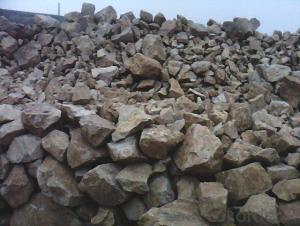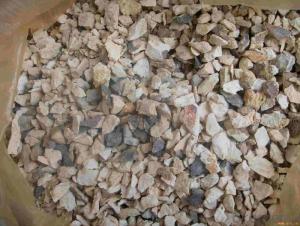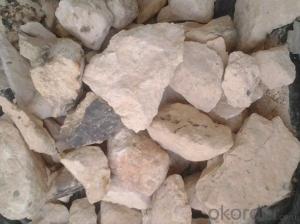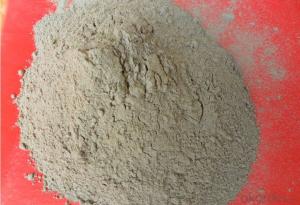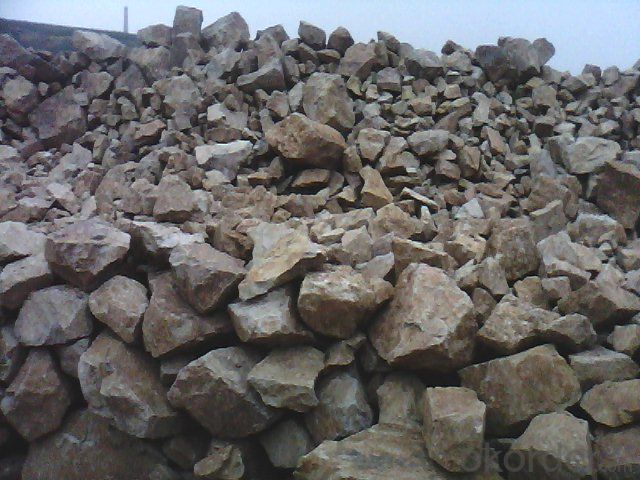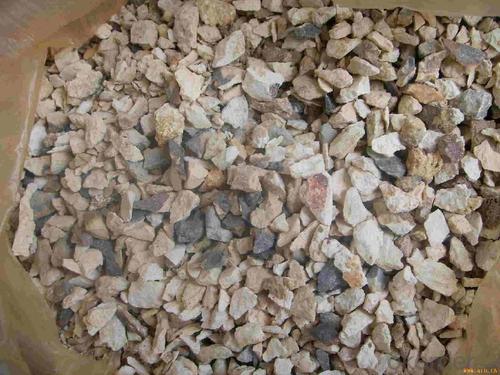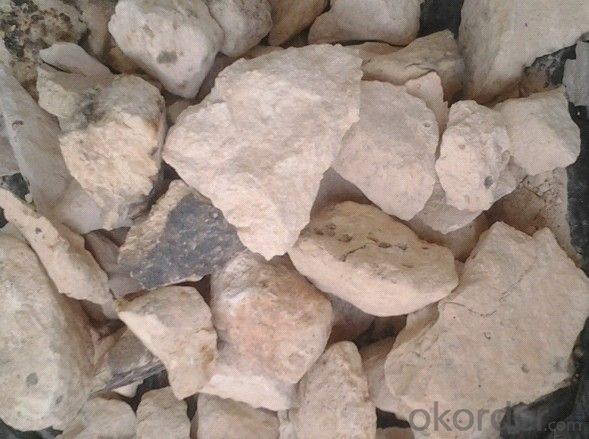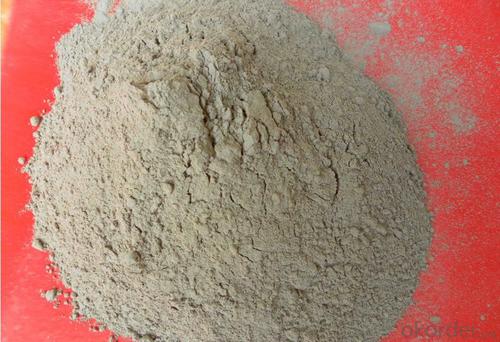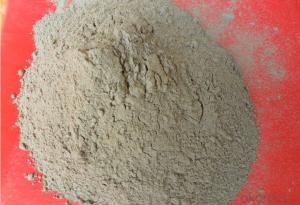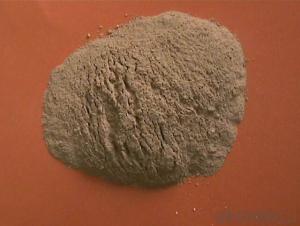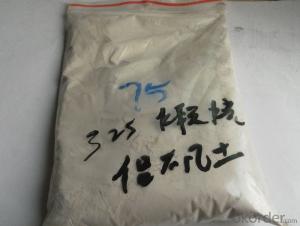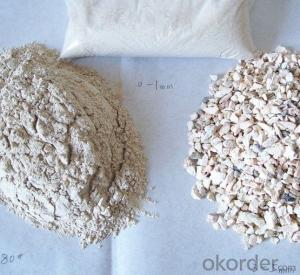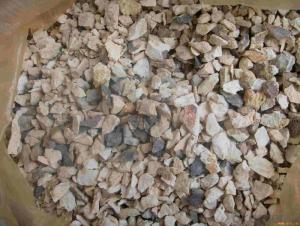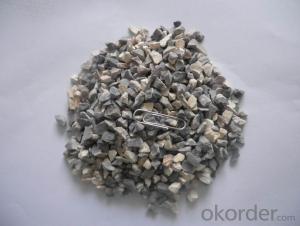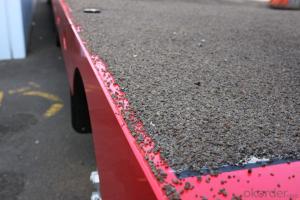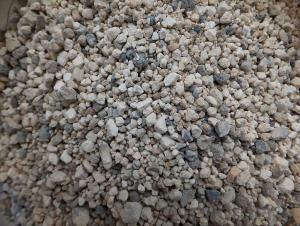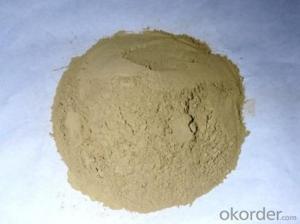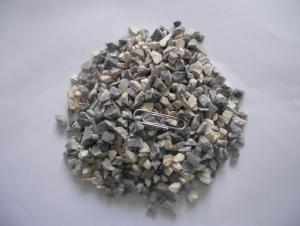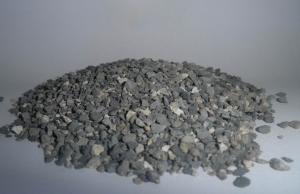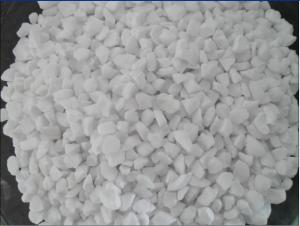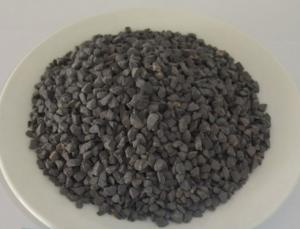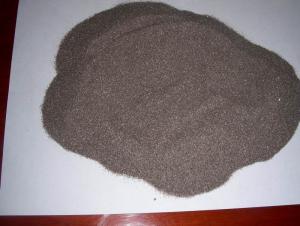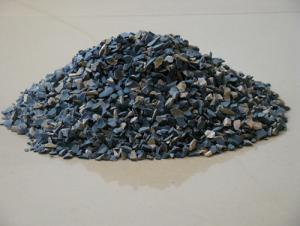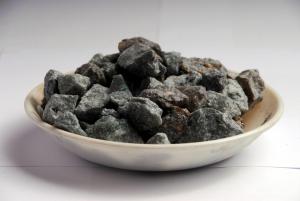Raw Materials for Refractory:Sintered Bauxite, Bauxite 85, Calcined Bauxite 88
- Loading Port:
- Tianjin
- Payment Terms:
- TT OR LC
- Min Order Qty:
- 11 m.t
- Supply Capability:
- 11111111 m.t/month
OKorder Service Pledge
OKorder Financial Service
You Might Also Like
1.Structure of Calcined Bauxite Description
Bauxite (aluminous soil; Bauxite) is also called the alumina or bauxite, main ingredients are alumina, hydrated alumina containing impurities, is an earthy mineral. White or gray, brown and yellow or light red by iron. From 4 to 3.9 g/cm3 density, hardness, 1 ~ 3 is not transparent, very brittle. Very difficult to melt. Insoluble in water, soluble in sulfuric acid, sodium hydroxide solution. Mainly used for aluminium, refractory material.
2.Main Features of the Calcined Bauxite
Calcined bauxite is one of the principal ore of aluminum. Calcined bauxite contains hydrous aluminum oxides and aluminum
hydroxides, formed through the laterization of aluminous rocks in tropical and subtropical areas .Calcined bauxite is obtained by calcining (heating)superior grade bauxite at high temperature (from 85OC to 1600C) .This removes moisture there.By increasing the alumina content,compared to an alumina content of about 57%to 58% in raw bauxite, calcined bauxite has an alumina content of 84%to88%.The heating is carried out in rotary kilns.
3.Main usage of the Calcined Bauxite
(1) aluminium industry. Used in national defense, aerospace, automotive, electronics, chemical industry, daily necessities, etc.
(2) precision casting. Alumina clinker made after the mould precision casting processed into fine powder. Used in military industry, aerospace, communications, instrumentation, machinery and medical equipment department.
(3) is used for refractory products. High bauxite clinker refractoriness is as high as 1780, chemical stability strong, and good physical properties.
(4) aluminum silicate refractory fiber. With light weight, high temperature resistance, good thermal stability, low thermal conductivity, heat capacity is small and the advantages of resistance to mechanical shock. Used in iron and steel, nonferrous metallurgy, electronics, petroleum, chemical, aerospace, atomic energy, defense and other industries.
(5) in magnesia and bauxite clinker as raw materials, add the appropriate binder, used for pouring ladle whole ladle lining has particularly good effects.
(6) manufacture alumina cement, abrasive materials, ceramic industry and chemical industry can be aluminum of various compound.
4. Calcined Bauxite Images
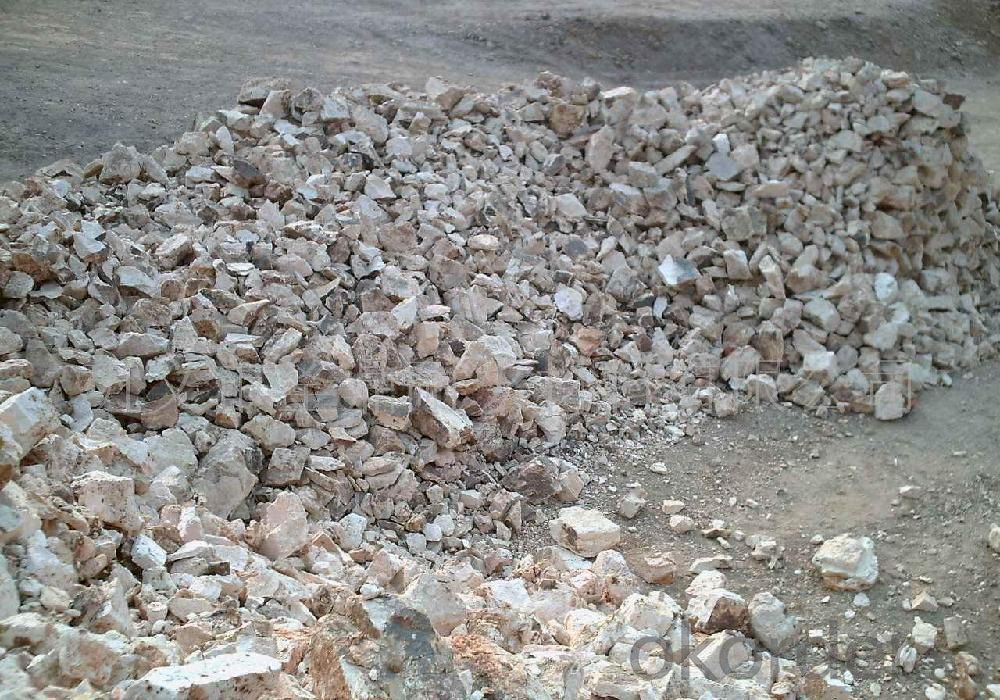
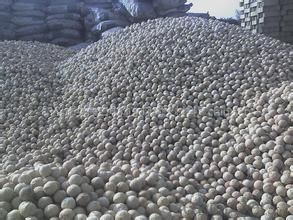
5. Calcined Bauxite Specification
| No | Al2O3 (%) | Fe2O3 (%) | R2O (%) | TiO2(%) | B.D |
88 bauxite | ≥87.5 | ≤2.0 | ≤0.55 | ≤4.5 | ≥3.25 |
87 bauxite | ≥85 | ≤2.0 | ≤0.55 | ≤4.5 | ≥3.23 |
86 bauxite | ≥80 | ≤2.0 | ≤0.60 | ≤4.4 | ≥3.20 |
85 bauxite | ≥85 | ≤2.0 | ≤0.60 | ≤4.2 | ≥3.15 |
82/83 bauxite | ≥82 | ≤2.0 | ≤0.60 | ≤4.0 | ≥3.10 |
6.FAQ of Calcined Bauxite
1). Q: Are you a factory or trading company?
A: We are a factory.
2). Q: Where is your factory located? How can I visit there?
A: Our factory is located in ShanXi, HeNan, China. You are warmly welcomed to visit us!
3). Q: How can I get some samples?
A: Please connect me for samples
4). Q: Can the price be cheaper?
A: Of course, you will be offered a good discount for big amount.
- Q: How can refractory materials be divided?
- There are many criteria for the classification of refractories.Just referring to a book about refractory.
- Q: Refractory material, refractory brick
- Refractory materials of various varieties, different uses, it is necessary to scientifically classify refractory materials, so as to facilitate scientific research, rational selection and management. There are many classification methods for refractory materials, among which chemical properties classification method, chemical mineral classification method, production technology classification method, material form classification method and so on are included.
- Q: What are the insulation fireproofing materials?
- Insulated shoes, insulated gloves, tape (cloth, plastic, as well as waterproof) yellow wax tube, mouth care, fireproof (ie asbestos cloth is sold by jin) there is pressure-caps black tape, waterproof tape ,casing. There are glass fiber needle felt is widely used in electrical, chemical, construction, transportation, automotive and other industries interlayer insulation and silencer system, and used as an insulating fireproof material.
- Q: How is the performance of refractory materials?
- It is a little difficult to answer. There are some requirement for refractory materials, such as fire resistance, softness, creep, thermal shock, abrasive resistance. Besides, requirements for construction performance include: Liquidity, plasticity and other linear change rate, volume density, strength (including high temperature) and all other important indicators must be tested the same conditions with the use of test conditions and test items like body density, strength, line changes in the basic project
- Q: Which one is better, fire-resistant wood or steel?
- According to my understanding. This fire-resisting wood is better. Iron birch. The iron birch is three times harder than the oak, twice as hard than ordinary steel. It is the world's hardest wood which is used as a substitute for metal. The Soviet Union have used iron birch for the manufacturing of roller ball, bearings and it is applied in yachts. Iron birch has some wonderful characteristics. Since it has very dense texture, once put in the water it will sink; even if it is soaked in the water for a long time, the inside still remains dry. The iron birch is twice harder than the steel, it doesn't mean that its hrc value is twice of that of the steel. HRC means test load 1471.1N (150KG-F) using a diamond cone head with the point angle of 120 degrees to press. The calculation formula HR= (K-H) /C,K=0.2MM,H is the depth of indentation after releasing the major load. C= 0.002MM, so HRC100 is a limit value, then H is 0, which means that even the diamond will not drill into it. Generally the hardness of bearing steel is about HRC60. Iron birch is the championship among trees in terms of hardness. The bullet hit the wood is like hitting on a thick steel plate and the wood will be motionless. So, it is known as a tree harder than steel. I hope my answer will be helpful to you.
- Q: whether the aluminum silicate thermal insulation material is fireproof or not?
- aluminum silicate is fireproof, and the melting point is between -40 ~ 800 ℃. Aluminum: it takes the flint clay clinker as raw material, produced by resistance or electric arc furnace fusion and injection fiber-forming process. its characteristics: Low thermal conductivity, excellent thermal and chemical stability, without binder and corrosive material.
- Q: which kind of refractory is commonly used in the industry
- Therefore it is known as special fire-resistant materials, such as yttria, high alumina raw material (sometimes neutral), olivine,which is used for alkalinity furnace, dolomite, and we roughly divided into several categories, beryllia, cerium oxide, these materials have a strong alkaline slag resistance, thorium oxide, lime, serpentine, which is picked from these refractory raw materials. the raw materials of basic refractory materials are mainly magnesia clay and titanium oxide, but because not many sources of raw materials, it can not be widely applied in the refractory industry, and we can analyze which kind of materal is processed by the pulverizer. There are many kinds of refractory materials, rotary?kiln can only be used in particular circumstances. These materials have a variety of slag resistance at different degrees. the main material of special refractories is zirconium oxide. the refractory clay is the most basic and most widely used raw material in the refractory industry.
- Q: What kind of refractory decorative board has good quality?
- Baby Rabbit has excellent refractory decorative board. It once won the Chinese famous brand, and was awarded iconic brand in plywood industry and the most influential integrated service providers of indoor decoration materials . Fireproof?panel is made from body paper(titanium coated paper, kraft paper) in high temperature and pressure through impregnation technology of melamine and phenolic resin. Refractory door slab is made by sticking fireproof?panel on base materials such as density board or chipboard.
- Q: What are the new types of refractories? What are the characteristics? Their applications and developments?
- Special materials often use AZS brick, corundum brick, magnesia chrome brick, silicon carbide, silicon nitride bonded silicon carbide, nitrides, silicides, sulfide, boride, carbide and other non oxide refractory materials; calcium oxide, chromium oxide, alumina, Magnesium Oxide, beryllium and other refractory materials. Often used insulation refractories are diatomite products, asbestos products, insulation panels and so on. Unshaped refractory materials commonly used are fettling, refractory ramming material, refractory castable, refractory plastic material, refractory clay, refractory gunning, refractory cast material, fireproof coating, lightweight castable, mud etc..
- Q: How many types of fire-resistant material?
- 1. Acid fire-resistant material refers to one with more than 93% SiO2. It is featured by resistance to the corrosion of acidic slag ad high temperature and easy to react with alkaline molten slag. 2. Alkaline refractory material generally refers to one with magnesium oxide or magnesium oxide and calcium oxide as the main component. It has high refractoriness and strong resistance to basic slag. 3. Silicate aluminum refractory material refers to one with SiO2, Al2O3 as the main component. According to the content of Al2O, it can be divided into three categories: half siliceous (15-30% Al2O3), clay (Al2O3 30 ~ 48%), high aluminum (more than 48% of Al2O3). 4. Fused cast refractory material refers to shaped refractory products made by high temperature melting and casting.
Send your message to us
Raw Materials for Refractory:Sintered Bauxite, Bauxite 85, Calcined Bauxite 88
- Loading Port:
- Tianjin
- Payment Terms:
- TT OR LC
- Min Order Qty:
- 11 m.t
- Supply Capability:
- 11111111 m.t/month
OKorder Service Pledge
OKorder Financial Service
Similar products
Hot products
Hot Searches
Related keywords
